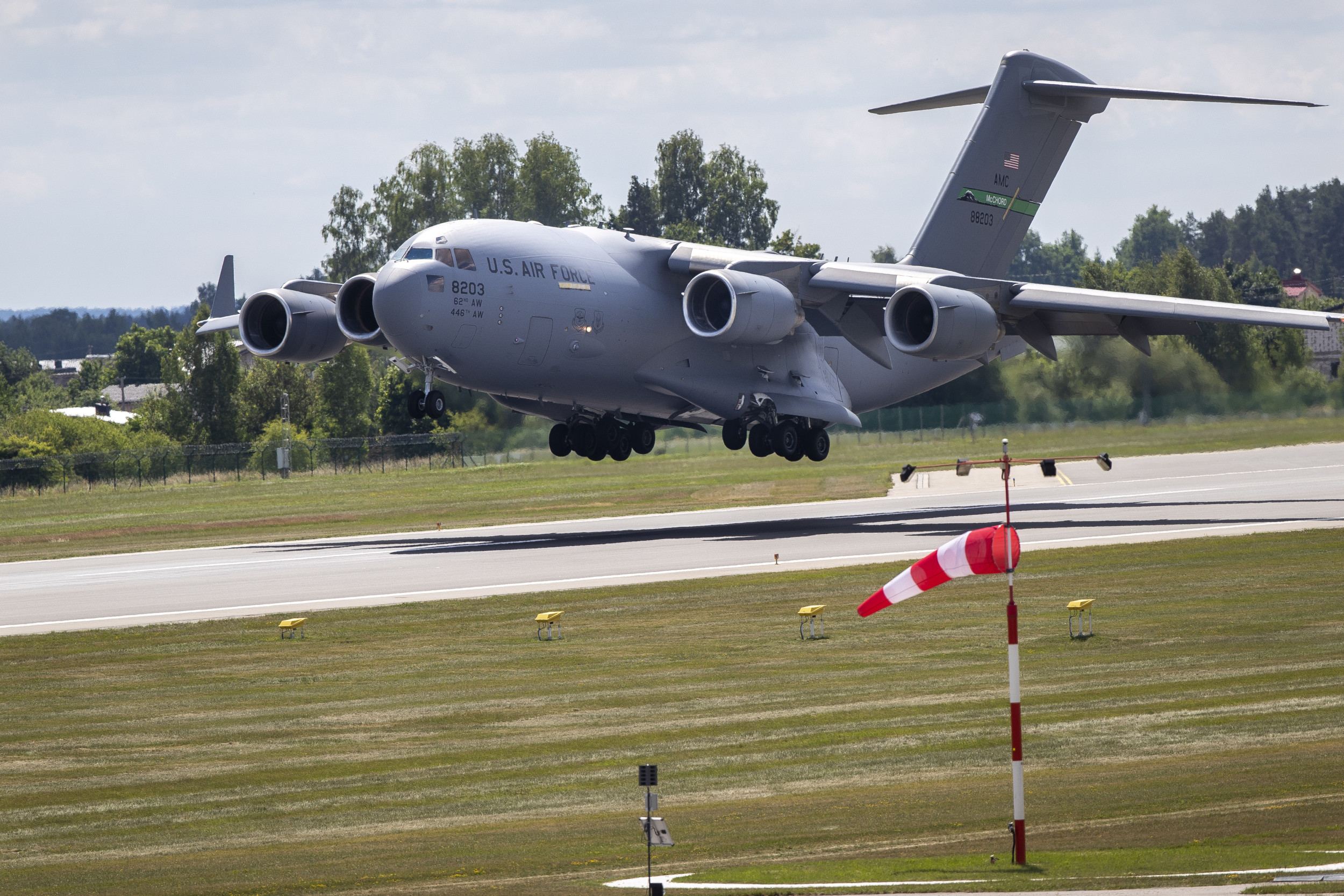🎙️ Voice is AI-generated. Inconsistencies may occur.
An American Airlines jet carrying 60 passengers and four crew members crashed into a U.S. Army helicopter while descending toward Ronald Reagan National Airport in Washington, D.C.
The collision, which happened in the evening of on Wednesday, Jan. 29, 2025, led to an extensive emergency response as rescue teams searched the Potomac River for survivors. As of the latest reports, 28 bodies have been recovered, all of them deceased.
All flights in and out of the airport have been suspended until at least 11 a.m. ET on Thursday. Divers are searching the river, and helicopters from various law enforcement agencies are conducting aerial scans. The cause of the collision has not yet been determined, and investigations are ongoing.
This incident is one of several recent aviation accidents that have sparked concerns about the safety of air travel in the U.S. While events like these lead to questions about global aviation security, research suggests that flying remains statistically safe, with the risk of dying in a plane crash has declined by 7 percent each year, according to the Massachusetts Institute of Technology.
This data provides important context for broader conversations. Newsweek reached out to experts, asking them whether they believe U.S. aviation is still considered to be safe.

Dr. Najmedin Meshkati: The Greatest Threat to Aviation Safety in the U.S. Lies on Airport Runways
Drawing on nearly four decades of experience teaching and researching aviation safety at USC's world-renowned USC Aviation Safety and Security Program, I've reached a sobering conclusion: The greatest threat to aviation safety in the U.S. lies not in the skies, but on our airport runways.
The collision near Reagan National Airport brings urgency to these concerns, as, according to BBC Breaking News, the crash occurred "as [the plane] was approaching the runway" of Reagan's airport.
While aircraft have become increasingly safer in flight, runway incursions remain a critical and under-addressed danger. These dangerous events arise from a complex interplay of human, organizational, and technological factors among three key players: Air traffic controllers and the crews of converging aircrafts.
The FAA itself acknowledges that: "Human factors is the common denominator in every runway incursion."
Yet despite this recognition, we fail to devote adequate attention and enough resources to addressing the human factors in aviation safety in the U.S.
The largest aviation accident in history in terms of fatalities occurred on the ground and not in the air: The March 27, 1977, Tenerife Airport Disaster, when two Boeing 747s collided on the runway at Los Rodeos Airport in the Canary Islands, causing 583 people to lose their lives.
This tragedy, caused by a lethal combination of pilot error, dense fog, and miscommunication with air traffic control, stands as a stark reminder of why runway safety demands our urgent attention.
Najmedin Meshkati, Professor, Civil/Environmental Engineering, Industrial and Systems Engineering, University of Southern California.
Captain Richard Levy (Retired): U.S. Aviation is Safer Than Driving Your Car Across Town
Aviation, specifically airline flying, is not only safe, but becoming safer by the year, with the FAA (US Federal Aviation Administration) watching over the manufacturing of aircraft at Boeing, production standards have very much improved.
I flew Boeing airplanes during my 41 years and never once had to shut down an engine or declare an emergency. Most of my diversions were due to weather situations.
Pilot training—which I am doing full time—at every major airline is improving using SMS (Safety Management Systems) such as TEM (Threat Error Management) or RRM (Risk Resource Management).
Piloting decision-making is constantly improving. In situations where bad weather affects safe airline operations or mechanical challenges unexpectedly appear, critical decisions are handled by choosing safety over convenience or low cost.
Airlines train pilots to manage non-normal situations with this main focus: One pilot focuses on flying the airplane and the other pilot focuses on reading checklists and communicating with air traffic control.
What happens when there is a cyberattack or an outage of the airline host computer systems? Very simple: If the aircraft is on the ground, takeoff is delayed. If the aircraft is airborne, either the flight continues to its planned destination, or an intermediate landing is made.
Computer outages occur, but with better anti-virus software and improved airline computer programming, these inconveniences are becoming rarer and rarer.
With constantly improving aircraft maintenance and pilot training, airline flying 99 percent of the time is much safer than driving your car across town.
Captain Richard Levy flew 41 years as a pilot for American Airlines, mostly internationally. He spent over 15 years as an Instructor/Check Pilot. He retired in 2018, and now works at another major airline also based in the U.S.
Artem Koreshkov: Outsourcing and Cost-cutting Increases Likelihood of Errors in U.S. Aviation
Within the U.S., aviation remains significantly safer, with a far lower ratio of crashes compared to the global average due to stricter oversight and regulations.
However, recent incidents expose vulnerabilities in both physical manufacturing processes and digital infrastructure. These challenges are partly rooted in broader systemic issues, as highlighted by Jerry Useem.
One major aviation manufacturer's shift toward outsourcing and cost-cutting has led to a decline in manufacturing oversight, where crucial assembly processes lack the rigorous quality control of earlier eras.
Such practices dilute the engineering soul of such companies, increasing the likelihood of errors.
Addressing these risks requires a dual approach: Tighter cybersecurity measures to safeguard operations against digital threats and a return to robust manufacturing practices that prioritize safety over short-term financial gains.
By reinvesting in engineering excellence and maintaining vigilant oversight, the U.S. aviation industry can preserve its reputation as one of the safest.
Artem Koreshkov, Co-Founder, Associate Commercial and Strategy
Aviation Technical Services Specialist.
Dr. Suzanne Kearns: Aviation Is Still the Safest Mode of U.S. Transportation
Aviation is still the safest mode of transportation, thanks to a firm commitment to safety and risk management among the industry generally.
In 2023, the International Civil Aviation Organization reported the global accident rate for scheduled commercial flights was 2.05 accidents per million departures, a low number that reflects the industry's rigorous safety practices.
Cybersecurity risks and rapid technological advancements present new complexities, but initiatives such as the creation of the Waterloo Institute for Sustainable Aeronautics (WISA) have significantly increased the opportunities for industry to work with expert researchers to proactively identify potential hazards and implement forward-thinking strategies to mitigate risk.
Cross-sector collaboration between industry and researchers with advanced technological expertise is essential to support the continued safety, reliability, and sustainability of air travel even as the industry and society evolve.
Suzanne Kearns, Associate Professor, Aviation, University of Waterloo.
Dr. David D. Woods: Economic Pressures and Infrastructure Threaten to Undermine U.S. Aviation Safety
People on the front lines provide an essential source of resilience and safety in aviation.
However, the pace of change, new technology, IT infrastructure vulnerabilities, and intense economic pressures threaten to undermine the factors that have made aviation transportation so safe and reliable.
Only public pressure to value safety over profits will ensure the future of aviation safety.
David D. Woods, Professor, the Department of Integrated Systems Engineering, Ohio State University.
Dr. R. John Hansman: U.S. Aviation Incidents Get Attention Because They Are Rare
The safety of U.S. commercial aviation is unprecedented. There is no other mode of transportation that is even close in terms of safety.
The occasional incidents that occur get a lot of attention in part because they are so rare, but also demonstrate that the commercial aviation system is fairly robust to problems.
Cybersecurity issues may cause flight cancellations but this is in part to assure safety.
R. John Hansman, U.S. Physicist, T. Wilson Professor of Aeronautics & Astronautics, Massachusetts Institute of Technology.
About the writer
Carine Harb is Associate Editor at Newsweek, specializing in the My Turn section and expert-related articles. Based in London, UK, ... Read more




